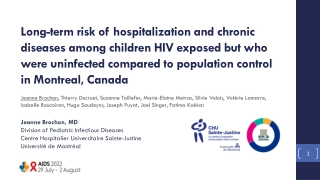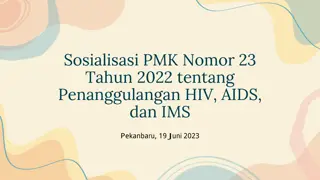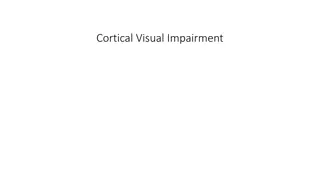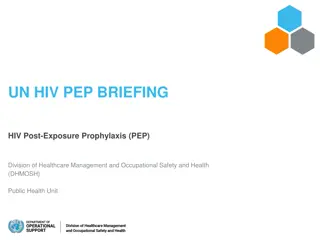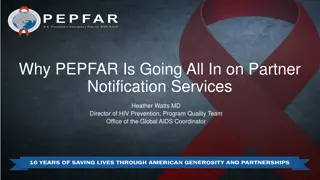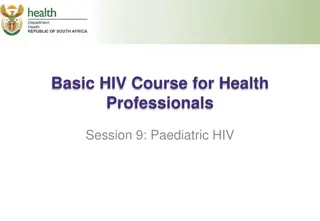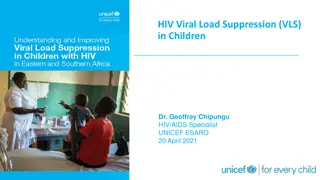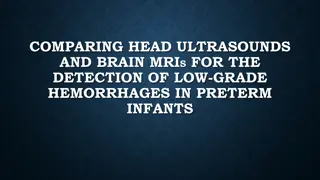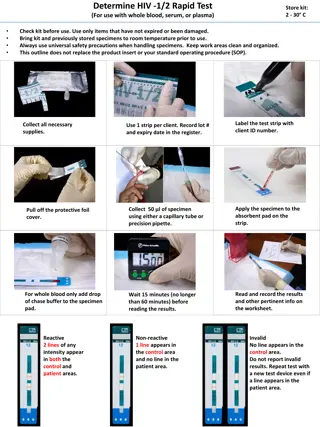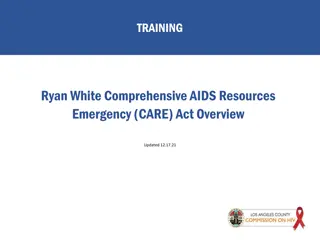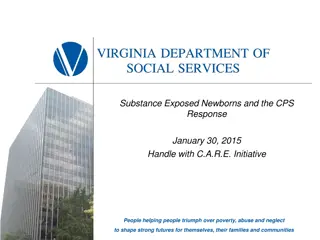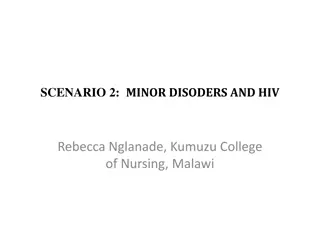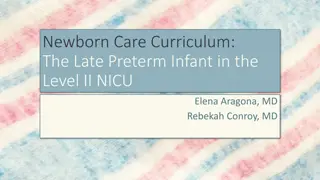
Risk Factors for Vertical Transmission Among HIV-Exposed Infants at PMGH
Explore the risk factors for vertical transmission among HIV-exposed infants delivered at Port Moresby General Hospital. The study aims to analyze factors such as maternal ART compliance, feeding choices, and infant prophylaxis. Results show demographic information, ANC attendance, types of deliveries, and more.
Download Presentation

Please find below an Image/Link to download the presentation.
The content on the website is provided AS IS for your information and personal use only. It may not be sold, licensed, or shared on other websites without obtaining consent from the author. If you encounter any issues during the download, it is possible that the publisher has removed the file from their server.
You are allowed to download the files provided on this website for personal or commercial use, subject to the condition that they are used lawfully. All files are the property of their respective owners.
The content on the website is provided AS IS for your information and personal use only. It may not be sold, licensed, or shared on other websites without obtaining consent from the author.
E N D
Presentation Transcript
Characteristics of HIV exposed infants at 6 weeks of age at PMGH Mane Amini DCH Candidate, 2023
Introduction It is estimated that 1.3 million women and girls living with HIV become pregnant every year (W.H.O) Major route of HIV infection in children is MTCT. The vertical transmission rate (VTR) is 15-45% without any intervention (W.H.O) Common in Low middle income countries such as PNG Current (2023) VTR is 34% (NDOH) ART plus proper prevention of MTCT interventions like safe delivery, infant prophylaxis can reduce this risk to less than 2% (ACOG: 2018)
Aim of the study To analyze risk factors for vertical transmission among HIV exposed infants delivered at Port Moresby General Hospital at 6 weeks of life
Methodology Prospective study Study site: PMGH Wards/Location: SCN/PNW/WBC Time frame: April June 2023 Inclusion Criteria o Infants who are born to a HIV positive mother at PMGH Exclusion Criteria o Communication barrier o Very sick mothers unable to get information o Fall out/LTFU at 6 weeks
Methodology Sampling method: Convenient sampling Sample size: n=40 Data Collection form was used to collect data Followed-up at WBC Analysis: Microsoft office excel, 2013 Frequency and percentage
Risk Assessment Other Risk factors o Booked vs Unbooked o Type of delivery o Maternal ART compliance o Feeding choices o Infant RVI prophylaxis PNG National Guidelines for HIV Care and Treatment
Results TOTAL ANC ATTENDANCE 17% Demographic information Age range Mean age Median age Parity Booked at PMGH Booked at Urban clinic Result PMGH 83% 19-40 26.3 27 1-4 N=7(17%) N=33 (83%) URBAN CLINICS Types of Deliveries 2% 2% NVD C/S Vacuum 96%
Results Early Infant Diagnosis at 6 weeks Negative RISK FACTORS Total Positive 0% 0% 0% 0% 0% Booked Unbooked EBF Formula feeding Mixed feeding On ART > 4 weeks Compliant On ART < 4 weeks Non-compliant Infant prophylaxis N=36 (90%) 100% N=4 (10%) N=36 (90%) 100% N=2 (5%) N=3 (7.5%) 100% 100% 100% N=37(93%) 100% 0% N=4(10%) 100% 0% N=40(100%) 100% 0%
Discussion The current vertical transmission rate in PNG is 34% Despite high vertical transmission rate, it is not reflected in this study. This is because this study only reflects PMGH and not PNG as whole. The low to No transmission at 6 weeks is a reflection of PPTCT program here at PMGH. Majority (36%) of this mothers attended ANC, and were commenced on ART over 4 weeks prior to delivery, and were compliant.
Discussion Most mothers (90%)choose exclusive breast feeding for their babies at birth. All the infants studied were commenced on ART prophylaxis soon after birth With the necessary intervention, there is a strong scientific evidence that HIV is unlikely to be transmitted through breast feeding (W.H.O)
Conclusion Infants who are born to mothers with low-risk and commenced on ART prophylaxis soon after birth and are compliant to treatment, have low vertical transmission despite risk factors. Strengthening PPTCT programs More studies required Case control Cohort study
Limitation Limited time Small sample size Maternal viral load were unavailable hence viral load suppression is not determined. Study design
Acknowledgement God almighty My wife and children Professor Trevor Duke Dr. G. Vali, Dr. Barnabas, Dr. Marcus, Dr. Pulsan Team at SCN/PNW/WBC Paediatric team as a whole Patients and guardians
References The National Department of Health. "Antiretroviral Drugs for HIV prevention". In: Papua New Guinea National Guidelines for HIV care and treatment. PNG; 2019. p. 22. WHO. Mother-to-child transmission of HIV - Global HIV Programme. [cited 2023 Aug 28]. Global HIV Programme. Available from: https://www.who.int/teams/global-hiv-hepatitis-and-stis- programmes/hiv/prevention/mother-to-child-transmission-of-hiv PNG Paediatric Society. 2022 annual report for child morbidity and mortality. PNGNDOH; 2022 p. 28. Maria F.M. Barral, Gisele R. de Oliveira et al. 2014. Risk factors of hiv-1 vertical transmission (vt) and the influence of antiretroviral therapy (art) in pregnancy outcome. Available from: https://indicatorregistry.unaids.org/indicator/mother-child-transmission-hiv Ayesha Khan. 2017. Strategic Framework for Prevention of Parent to Child Transmission (PPTCT) of HIV in Pakistan ACOG. 2018. Labor and Delivery Management of Women With Human Immunodeficiency Virus Infection. Available from: https://www.acog.org/clinical/clinical-guidance/committee- opinion/articles/2018/09/labor-and-delivery-management-of-women-with-human- immunodeficiency-virus-infection cited. 6/9/23.

